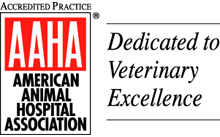

Vaccines
For years the veterinary profession has stressed the importance of
vaccinations and this is for good reason. Animals, even more than people, are
susceptible to infectious disease. Even the cleanest animal still eats off the
floor, sniffs his own or other animals droppings, and bathes less frequently than
people. The following are the vaccines that are offered for dogs and cats.
Vaccine protocols are often different for different pets and they are based on a
number of different factors which include, indoor or outdoor status, presence of
other animals in the house, immune competence of the pet and the owner,
species of the pet, geographic area where the pet travels etc. We recommend
discussing these issues with our veterinarians in order optimize the protection
for you pet’s needs.
We use high quality vaccines that have been shown to protect your pets. We
put thought into which vaccine and what frequency they ought to be
administered.
1. Rabies: Rabies is a uniformly life threatening disease that is spread
through the saliva of an infected animal that bites another animal. Nassau
county has seen a very real increase in the incidence of this deadly disease. It
is carried by opossums, raccoons, bats and many other animals including dogs
and cats. It is uniformly fatal in people and if a person is thought to have been
potentially exposed to Rabies they must seek medical attention BEFORE
clinical signs of disease occur. Rabies affects the nervous system and clinical
signs can range from seizures, behavior changes, drooling, circling, twitching,
aggression etc. Currently Rabies shots are given to dogs after 3 months of age
and are repeated annually. Rabies vaccination in New York State is required
by law. Our hospital requires all dogs and cats to be up to date on these
inoculations and we require proof of vaccination when done elsewhere.
2. Distempter: (four in one DAPP): This is a modified life combination
vaccine that is administered to all dogs. It proects against Canine distempter
virus, Canine adenovirus type 2, Canine Parainfluenza virus and Canine
Parvovirus. The vaccination is given at 5 to 8 weeks of age and is repeated
every 3 to 4 weeks until the puppy is physically (and immunologically) mature.
Therefore there are usually 3 to 4 required puppy visits. Adult dogs are
vaccinated annually. Canine distempter is neurological disease that causes
seizures, shaking, twitching and many other nervous system related problems.
Canine Parainfluenza is like influenza in people and causes respiratory
disease. Canine Parvovirus causes severe gastrointestinal disease and has a
high mortality rate. Canine Adenovirus type 2 is a multifocal viral disease
affecting the eyes, liver and classically the upper respiratory system. The
distemper vaccine is a core vaccine and is strongly recommended in all our
patients.
3. Heartworm Disease: Heartworm disease is a preventable disease that
affects dogs and cats. It has a complicated life cycle that requires a mosquito
bite. Heartworm prevention is currently accomplished with once monthly
chewable medication. Annual heartworm testing is strongly recommended
and requires only a small volume of blood to be drawn. This is done during
yearly trips to the veterinarian and can be collected while you wait. We strive
to have all our patients on both annual heartworm testing and once monthly
heartworm prevention. We have chewable tablets that need to be given
monthly. Heartworm preventatives offer protection against many intestinal
parasites (worms). We strongly recommend our patients are both annually
tested for heartworm disease and are on monthly prevention for 12 months per
year. Treatment for heartworm disease can require expensive medication,
hospitalization and is associated with significant morbidity. Thus the key is
prevention which is really quite easy as the heartworm medicine is a tasty treat.
4. Lyme disease (Borrelia Burgdorferi): Lyme disease affects animals and
people. It is caused by a spirochete and can have devastating effects on
people and animals. The northeast United States is within a belt that goes up
through Maine and down through Virginia where the incidence of this disease
is significantly higher than the rest of the country. The vector for the disease is
various species of hard ticks particularly the Ixodes species of tick (they are also
the host of other important infectious diseases seen in domestic animals).
These ticks are small, and often not seen on the patient immediately. The tick
needs to be on the dog for 48 hours to transmit the disease. Clinical signs in
dogs include shifting leg lameness, acute fevers, joint swelling, anorexia,
general malaise and lymph node enlargement. Some dogs show only some
clinical signs. Other more serious sequela include kidney failure and can be
seen secondary to lyme disease. Lyme vaccination is recommended for dogs
spending time outside or in areas where ticks are present. The protocol for
vaccination is, one vaccine followed by a second booster 3 to 4 weeks later
and then yearly vaccination. Tick preventatives should be utilized and we
currently recommend topical Frontline and a Preventic tick collar..
5. Leptospirosis: Leptospirosis is a bacterial disease that is worldwide in
distribution. It affects domestic animals as well as people. Lepto is transmitted
between animals by direct or indirect contact, through infected urine, venereal
and placental transfer or through ingestion of infected tissue. Stagnant or slow-
moving water provides an ideal environment for leptospires and should be
considered high risk. Leptospirosis frequently affects many different tissues
particularly the liver and kidneys and it can be fatal. Vaccination reduces the
risk of lepto infections and like lyme requires two vaccinations three to four
weeks apart followed by annual vaccination to maintain maximal protection.
Dogs spending time outside or in endemic areas should be vaccinated against
this potentially fatal kidney and liver disease.
6. Bordetella (kennel cough): This is a component of a highly contagious
upper respiratory infection that can also cause canine pneumonia. It is a
disease that occurs when dogs mix. The mode of transmission is similar to a
cold spreading among the children in a nursery school class. Vaccination
reduces the severity of disease and is required in many boarding facilities. We
currently recommend vaccination to dogs that are boarded at our facility or in
any situation where they mix with other dogs (i.e. dog parks, play dates with
other dogs, dog spas) and we vaccinate many dogs annually to increase their
protection against this gram negative bacteria.
7. Fecal examination and worming: Intestinal parasites including round
worms, tape worms, hook worms and giardia are very common in domestic
animals. Fecal flotation is a good screening tool to find worms and eggs and is
recommended as a tool to detect even subclinical infections. These parasites
are often silent but can be spread to other animals or people and have
potentially devastating consequences particularly in children. Round worms
have been associated with ocular and visceral larva migrans in children.
Once monthly heartworm prevention helps protect pets. There are numerous
deworming protocols and these should be discussed with your veterinarian.
Different intestinal parasites respond to different deworming agents. Fecal
flotation and/or direct fecal analysis test are recommended for all new puppies
and kittens and it is appropriate to check adults from time to time. Risk factors
include going to dog parks, boarding (especially in cageless boarding
facilities), spending time outdoors and poor litter cleaning or backyard
cleaning. We suggest deworming all new pets regardless of whether they have
been dewormed before they were acquired.
8. Leukemia: (FeLV): Feline leukemia is a retrovirus that causes
lymphoma, immune suppression and leukemia in infected cats. It is highly
contagious between cats (only cats). Vaccination reduces the incidence of
disease and is given 3 to 4 weeks apart and then yearly. We recommend all
new cats be tested for FeLV.
9. Feline rhinotracheitis (FVRCP): This is a modified live vaccine that is
strongly recommended to all feline patients. The vaccine protects against
feline rhinotracheitis, feline calcivirus and feline panleukopenia. The first two
viruses are contagious upper respiratory viruses and the later is a common,
potentially fatal diarrhea virus. Kittens needs vaccination every 3 to 4 weeks
until 5 to 7 months and annual to every three years vaccination thereafter.
Even cats in houses without other pets should get this vaccination as most cats
have feline rhinotracheitis in a latent stage in their bodies.
Titers:
Antibody levels (or titers) in the blood can be measured with a blood test to see
if additional vaccination is needed. It is more costly than annual
revaccination but sometimes we want to avoid repeated vaccinations. Blood
tests for vaccine titers are a safe way to objectively quantify degree of
protection. If you are interested in vaccine titers please speak with one of the
doctors.
vaccinations and this is for good reason. Animals, even more than people, are
susceptible to infectious disease. Even the cleanest animal still eats off the
floor, sniffs his own or other animals droppings, and bathes less frequently than
people. The following are the vaccines that are offered for dogs and cats.
Vaccine protocols are often different for different pets and they are based on a
number of different factors which include, indoor or outdoor status, presence of
other animals in the house, immune competence of the pet and the owner,
species of the pet, geographic area where the pet travels etc. We recommend
discussing these issues with our veterinarians in order optimize the protection
for you pet’s needs.
We use high quality vaccines that have been shown to protect your pets. We
put thought into which vaccine and what frequency they ought to be
administered.
1. Rabies: Rabies is a uniformly life threatening disease that is spread
through the saliva of an infected animal that bites another animal. Nassau
county has seen a very real increase in the incidence of this deadly disease. It
is carried by opossums, raccoons, bats and many other animals including dogs
and cats. It is uniformly fatal in people and if a person is thought to have been
potentially exposed to Rabies they must seek medical attention BEFORE
clinical signs of disease occur. Rabies affects the nervous system and clinical
signs can range from seizures, behavior changes, drooling, circling, twitching,
aggression etc. Currently Rabies shots are given to dogs after 3 months of age
and are repeated annually. Rabies vaccination in New York State is required
by law. Our hospital requires all dogs and cats to be up to date on these
inoculations and we require proof of vaccination when done elsewhere.
2. Distempter: (four in one DAPP): This is a modified life combination
vaccine that is administered to all dogs. It proects against Canine distempter
virus, Canine adenovirus type 2, Canine Parainfluenza virus and Canine
Parvovirus. The vaccination is given at 5 to 8 weeks of age and is repeated
every 3 to 4 weeks until the puppy is physically (and immunologically) mature.
Therefore there are usually 3 to 4 required puppy visits. Adult dogs are
vaccinated annually. Canine distempter is neurological disease that causes
seizures, shaking, twitching and many other nervous system related problems.
Canine Parainfluenza is like influenza in people and causes respiratory
disease. Canine Parvovirus causes severe gastrointestinal disease and has a
high mortality rate. Canine Adenovirus type 2 is a multifocal viral disease
affecting the eyes, liver and classically the upper respiratory system. The
distemper vaccine is a core vaccine and is strongly recommended in all our
patients.
3. Heartworm Disease: Heartworm disease is a preventable disease that
affects dogs and cats. It has a complicated life cycle that requires a mosquito
bite. Heartworm prevention is currently accomplished with once monthly
chewable medication. Annual heartworm testing is strongly recommended
and requires only a small volume of blood to be drawn. This is done during
yearly trips to the veterinarian and can be collected while you wait. We strive
to have all our patients on both annual heartworm testing and once monthly
heartworm prevention. We have chewable tablets that need to be given
monthly. Heartworm preventatives offer protection against many intestinal
parasites (worms). We strongly recommend our patients are both annually
tested for heartworm disease and are on monthly prevention for 12 months per
year. Treatment for heartworm disease can require expensive medication,
hospitalization and is associated with significant morbidity. Thus the key is
prevention which is really quite easy as the heartworm medicine is a tasty treat.
4. Lyme disease (Borrelia Burgdorferi): Lyme disease affects animals and
people. It is caused by a spirochete and can have devastating effects on
people and animals. The northeast United States is within a belt that goes up
through Maine and down through Virginia where the incidence of this disease
is significantly higher than the rest of the country. The vector for the disease is
various species of hard ticks particularly the Ixodes species of tick (they are also
the host of other important infectious diseases seen in domestic animals).
These ticks are small, and often not seen on the patient immediately. The tick
needs to be on the dog for 48 hours to transmit the disease. Clinical signs in
dogs include shifting leg lameness, acute fevers, joint swelling, anorexia,
general malaise and lymph node enlargement. Some dogs show only some
clinical signs. Other more serious sequela include kidney failure and can be
seen secondary to lyme disease. Lyme vaccination is recommended for dogs
spending time outside or in areas where ticks are present. The protocol for
vaccination is, one vaccine followed by a second booster 3 to 4 weeks later
and then yearly vaccination. Tick preventatives should be utilized and we
currently recommend topical Frontline and a Preventic tick collar..
5. Leptospirosis: Leptospirosis is a bacterial disease that is worldwide in
distribution. It affects domestic animals as well as people. Lepto is transmitted
between animals by direct or indirect contact, through infected urine, venereal
and placental transfer or through ingestion of infected tissue. Stagnant or slow-
moving water provides an ideal environment for leptospires and should be
considered high risk. Leptospirosis frequently affects many different tissues
particularly the liver and kidneys and it can be fatal. Vaccination reduces the
risk of lepto infections and like lyme requires two vaccinations three to four
weeks apart followed by annual vaccination to maintain maximal protection.
Dogs spending time outside or in endemic areas should be vaccinated against
this potentially fatal kidney and liver disease.
6. Bordetella (kennel cough): This is a component of a highly contagious
upper respiratory infection that can also cause canine pneumonia. It is a
disease that occurs when dogs mix. The mode of transmission is similar to a
cold spreading among the children in a nursery school class. Vaccination
reduces the severity of disease and is required in many boarding facilities. We
currently recommend vaccination to dogs that are boarded at our facility or in
any situation where they mix with other dogs (i.e. dog parks, play dates with
other dogs, dog spas) and we vaccinate many dogs annually to increase their
protection against this gram negative bacteria.
7. Fecal examination and worming: Intestinal parasites including round
worms, tape worms, hook worms and giardia are very common in domestic
animals. Fecal flotation is a good screening tool to find worms and eggs and is
recommended as a tool to detect even subclinical infections. These parasites
are often silent but can be spread to other animals or people and have
potentially devastating consequences particularly in children. Round worms
have been associated with ocular and visceral larva migrans in children.
Once monthly heartworm prevention helps protect pets. There are numerous
deworming protocols and these should be discussed with your veterinarian.
Different intestinal parasites respond to different deworming agents. Fecal
flotation and/or direct fecal analysis test are recommended for all new puppies
and kittens and it is appropriate to check adults from time to time. Risk factors
include going to dog parks, boarding (especially in cageless boarding
facilities), spending time outdoors and poor litter cleaning or backyard
cleaning. We suggest deworming all new pets regardless of whether they have
been dewormed before they were acquired.
8. Leukemia: (FeLV): Feline leukemia is a retrovirus that causes
lymphoma, immune suppression and leukemia in infected cats. It is highly
contagious between cats (only cats). Vaccination reduces the incidence of
disease and is given 3 to 4 weeks apart and then yearly. We recommend all
new cats be tested for FeLV.
9. Feline rhinotracheitis (FVRCP): This is a modified live vaccine that is
strongly recommended to all feline patients. The vaccine protects against
feline rhinotracheitis, feline calcivirus and feline panleukopenia. The first two
viruses are contagious upper respiratory viruses and the later is a common,
potentially fatal diarrhea virus. Kittens needs vaccination every 3 to 4 weeks
until 5 to 7 months and annual to every three years vaccination thereafter.
Even cats in houses without other pets should get this vaccination as most cats
have feline rhinotracheitis in a latent stage in their bodies.
Titers:
Antibody levels (or titers) in the blood can be measured with a blood test to see
if additional vaccination is needed. It is more costly than annual
revaccination but sometimes we want to avoid repeated vaccinations. Blood
tests for vaccine titers are a safe way to objectively quantify degree of
protection. If you are interested in vaccine titers please speak with one of the
doctors.




